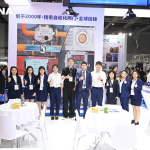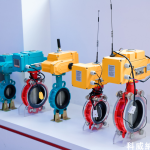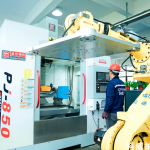In recent years, the electric ball valve segment within the valve industry has been experiencing a remarkable surge in growth and innovation, becoming a focal point of technological advancements and market expansion. This development not only reflects the industry's adaptability to evolving industrial demands but also signals a shift towards more efficient, automated, and intelligent fluid control solutions.

Technological Breakthroughs Propel Efficiency and Precision
One of the most significant trends in the electric ball valve sector is the continuous improvement in actuator technology. Leading manufacturers, such as [Manufacturer Name 1], have introduced high - torque electric actuators that enable faster and more precise valve operation. These actuators are equipped with advanced control systems, allowing for accurate flow regulation. For instance, the new - generation actuators can achieve a flow control accuracy of within 0.5%, which is a substantial improvement compared to previous models. This level of precision is crucial in industries like pharmaceuticals and semiconductor manufacturing, where even the slightest deviation in fluid flow can affect product quality.

Moreover, the integration of smart sensor technology into electric ball valves is revolutionizing the way they are monitored and maintained. [Manufacturer Name 2] has developed a smart electric ball valve that can self - diagnose potential issues. The built - in sensors detect parameters such as temperature, pressure, and vibration. If any anomalies are detected, the valve can send real - time alerts to operators, enabling proactive maintenance. This not only reduces unplanned downtime but also extends the lifespan of the valve. According to a recent study, plants using these smart electric ball valves have reported a 30% reduction in maintenance costs and a 25% increase in overall system uptime.
Expanding Applications in Diverse Industries
The applications of electric ball valves are becoming increasingly diverse. In the energy sector, especially in oil and gas production, electric ball valves are being used in subsea pipelines. Their ability to operate remotely and withstand high - pressure and corrosive environments makes them ideal for this challenging application. For example, in deep - sea oil drilling projects, electric ball valves can be controlled from on - shore control centers, ensuring safe and efficient operation without the need for direct human intervention in dangerous underwater conditions.
In the renewable energy field, electric ball valves play a crucial role in solar thermal power plants and wind farms. In solar thermal power plants, they are used to regulate the flow of heat - transfer fluids, optimizing energy collection and conversion efficiency. In wind farms, electric ball valves are employed in the hydraulic systems that control the pitch and yaw of wind turbines, enhancing the stability and power - generation capacity of the turbines.
The water treatment industry is also a major adopter of electric ball valves. With the growing global focus on water conservation and the need for efficient water management, electric ball valves are used to control the flow of water in treatment plants, distribution networks, and industrial water - recycling systems. Their precise control capabilities ensure that the right amount of water is delivered at the right time, reducing water waste and improving the overall efficiency of water treatment processes.
Market Expansion and Global Competition
The market for electric ball valves is witnessing robust growth on a global scale. Asia - Pacific, in particular, is emerging as a key growth region. Rapid industrialization in countries like China, India, and Vietnam is driving the demand for electric ball valves in sectors such as petrochemicals, power generation, and manufacturing. In China, for example, the government's push for smart manufacturing and the upgrade of industrial infrastructure has led to a significant increase in the adoption of electric ball valves. Local manufacturers are seizing this opportunity by investing in research and development to produce high - quality, cost - effective products that can compete with international brands.
However, the growth also brings intense global competition. Established international manufacturers, such as Emerson Electric Co. and Flowserve Corporation, are leveraging their technological expertise and global brand recognition to maintain their market share. They are continuously innovating and expanding their product portfolios to meet the diverse needs of customers worldwide. At the same time, new entrants, especially from emerging economies, are challenging the market with their competitive pricing and customized solutions.
Future Prospects and Challenges
Looking ahead, the future of the electric ball valve industry appears promising. With the ongoing development of technologies such as the Internet of Things (IoT), artificial intelligence (AI), and 5G communication, electric ball valves are expected to become even more intelligent and connected. For example, AI - powered predictive maintenance algorithms will be able to accurately predict valve failures before they occur, further reducing downtime and maintenance costs.
Nevertheless, the industry also faces several challenges. Stringent environmental regulations and safety standards require manufacturers to ensure that their products are environmentally friendly and meet high - level safety requirements. Additionally, the increasing complexity of industrial processes demands valves with higher performance and reliability, putting pressure on manufacturers to continuously innovate.
In conclusion, the electric ball valve industry is at a critical stage of development, with technological innovation, market expansion, and global competition driving its growth. As it continues to evolve, electric ball valves will play an increasingly important role in various industries, contributing to more efficient, sustainable, and intelligent industrial operations.











